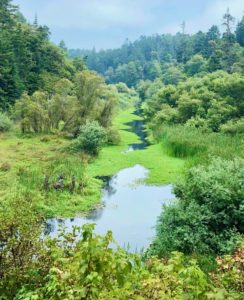 Effective September 8, 2023, the U.S. Environmental Protection Agency (EPA) and the U.S. Army Corps of Engineers (USACE) have issued a new final rule in the Code of Federal Regulations to conform the definition of ‘waters of the United States’ to the 2023 Supreme Court’s May 25, 2023 decision in Sackett vs. EPA. Under the new final rule, tributaries and wetlands must have a continuous surface connection to navigable waterways to be considered jurisdictional under the Clean Water Act. Only those relatively permanent, standing, or continuously flowing bodies of water that are described in ordinary parlance as “streams, oceans, rivers, and lakes” meet the current definition.
Effective September 8, 2023, the U.S. Environmental Protection Agency (EPA) and the U.S. Army Corps of Engineers (USACE) have issued a new final rule in the Code of Federal Regulations to conform the definition of ‘waters of the United States’ to the 2023 Supreme Court’s May 25, 2023 decision in Sackett vs. EPA. Under the new final rule, tributaries and wetlands must have a continuous surface connection to navigable waterways to be considered jurisdictional under the Clean Water Act. Only those relatively permanent, standing, or continuously flowing bodies of water that are described in ordinary parlance as “streams, oceans, rivers, and lakes” meet the current definition.
To fully understand the changes found within the new rule, it may help to summarize the earlier definition. Previously, to be considered a jurisdictional water of the U.S., a waterbody needed either a continuous surface connection with, or to be adjacent to, a navigable waterway, with ‘adjacent’ meaning a water that is bordering, contiguous, or neighboring (e.g., a wetland separated from the jurisdictional waterway by a man-made levee or a naturally-occurring beach dune). In the absence of a continuous surface connection (e.g., stream or wetlands) there was also a ‘significant nexus’ standard. A significant nexus occurred when the waterbody (alone or when considered with nearby features) affected the chemical, physical, or biological integrity of the traditional navigable water. This ‘significant nexus’ criteria allowed many isolated or ephemeral water features to be defined as ‘waters of the U.S.’
The new final rule amends the existing definition of waters of the U.S. in three primary ways:
1. Removed the ‘significant nexus’ standard so that even if a waterbody has chemical, physical, or biological interactions with a navigable water, if the continuous surface connection is absent the isolated waterbody does not meet the definition;
2. An adjacent wetland cannot be considered jurisdictional. It must contain such a clear, continuous surface connection such that there is “no clear demarcation” between ‘waters’ versus ‘wetlands’; and
3. Interstate wetlands are no longer considered jurisdictional waters of the U.S. solely because they cross state lines. A river, lake, or other flowing waterbody that crosses state lines is still considered jurisdictional.
As a result of these changes, certain drainage features and wetlands previously determined to be jurisdictional may no longer be. It is unclear how these changes may affect previous regulatory determinations and associated mitigation requirements. The EPA and USACE will be hosting several webinars on September 12, 13, and 20, 2023 to discuss the new final rule further. Acorn will be following how these changes may affect past and future land development and infrastructure projects.
The Federal Register provides additional information on the new final rule: https://www.federalregister.gov/documents/2023/09/08/2023-18929/revised-definition-of-waters-of-the-united-states-conforming


Comments are closed.